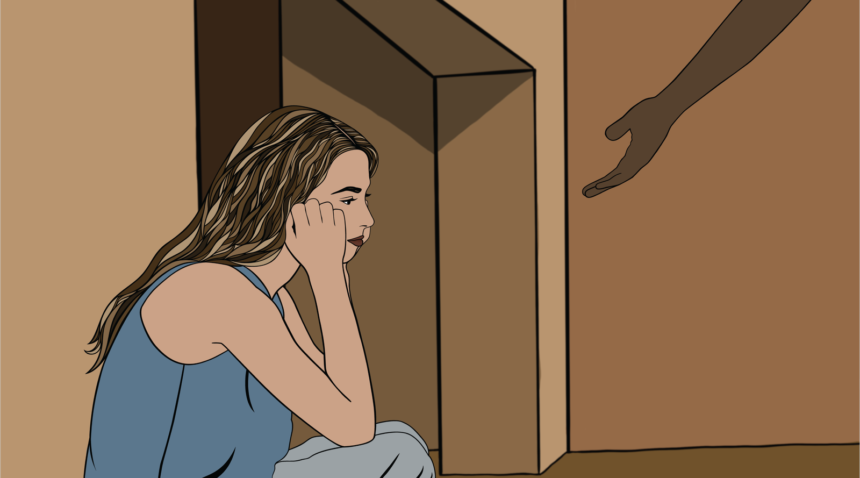In North Carolina, one person dies of suicide every six hours. It’s the 11th-leading cause of death in the state and the third-leading cause of death for people ages 15 to 34.
“Suicide is a serious public health concern,” says University of North Carolina psychiatrist Winston Li, MD. “Recent data from the Centers for Disease Control show that rates of suicide have been increasing over the past 15 years.”
If you’re considering suicide, please reach out for help. Look under “Resources for Suicide Prevention” below.
“Mental illness is a significant risk factor for suicide,” Dr. Li says. “Amidst this concerning backdrop, the message of hope is that mental illness is often treatable. The first step in treatment is reaching out for help.”
If you know someone who is at risk for suicide, learn about how you can help potentially save a life. Research shows that talking about suicide, providing access to support and reducing means to self-harm can all help prevent suicide.
Risk Factors for Suicide
Many factors can contribute to suicide, though it’s important to remember that they do not directly cause or predict a suicide. Here are risk factors to be aware of, according to the National Suicide Prevention Lifeline:
- Mental disorders, especially depression, mood disorders, schizophrenia, anxiety disorders and certain personality disorders
- Alcohol and other substance use disorders
- Feelings of hopelessness
- Impulsive or aggressive tendencies
- History of trauma or abuse
- Major physical illness
- Previous suicide attempt
- Family history of suicide
- Job or financial loss
- Loss of relationships
- Easy access to lethal means, such as a gun
- Local clusters of suicide
- Sense of isolation and lack of social support
- Stigma associated with asking for help
- Lack of health care, especially mental health and substance abuse treatment
- Cultural or religious beliefs, such as a view that suicide is a noble decision
- Exposure to others who have died by suicide (in real life, in the media or online)
Warning Signs of Suicide
The following warning signs might indicate someone is suicidal:
- Talking about wanting to die or wanting to kill themselves
- Looking for a way to kill themselves, such as searching online about methods or buying a gun
- Talking about feeling hopeless, having no reason to live, feeling trapped, being in unbearable pain or being a burden to others
- Increasing the use of alcohol or drugs
- Acting anxious or agitated or behaving recklessly
- Sleeping too little or too much
- Withdrawing or isolating themselves
- Showing rage or talking about seeking revenge
- Having extreme mood swings
Talking to someone who might be suicidal isn’t easy, but it could save a life. Keep these tips in mind:
- Talk openly and be direct.
- Listen and be nonjudgmental.
- Get involved and show your interest and support.
- Take action when necessary, for example by removing weapons, pills or other means.
- Get help from outside resources that specialize in suicide prevention or crisis intervention.
Resources for Suicide Prevention
Many resources offer suicide prevention support, education and training:
988 Suicide & Crisis Lifeline: Call or text 988, available 24/7
Crisis Text Line: Text HOME to 741741 to text with a trained crisis counselor for free, 24/7
Veterans Crisis Line: Text 838255
Vets4Warriors: Support service for veterans and their caregivers
SAMHSA Treatment Referral Hotline (substance abuse): (800) 662-HELP (4357)
RAINN National Sexual Assault Hotline: (800) 656-HOPE (4673)
National Teen Dating Abuse Helpline: (866) 331-9474
North Carolina Suicide Prevention Plan: Guide to empower and educate residents on how to take action against suicide
UNC Health Care mental health services: Psychiatric services that provide comprehensive clinical care for mental health and psychiatric disorders
Alcohol/Drug Council of North Carolina: (800) 688-4232
The North Carolina Department of Health and Human Services’ Garrett Lee Smith Youth Suicide Prevention Program, which includes:
- It’s OK 2 Ask, a site for young people to share information on suicide prevention
- Applied Suicide Intervention Skills Training (ASIST), an intervention program for ages 16 and up that teaches suicide first aid, including how to recognize signs and symptoms and provide immediate help
- safeTALK, a training for ages 15 and up that educates on how to identify people with thoughts of suicide and connect them to intervention resources
- SAMHSA Suicide Prevention Publications and Resources, educational material and online courses from the Substance Abuse and Mental Health Services Administration on topics such as counseling on access to lethal means and implementing a gatekeeper suicide prevention program
Suicide Prevention Resource Center: National organization with resources on creating effective prevention strategies and programs, as well as online and virtual trainings, webinars and toolkits
American Foundation for Suicide Prevention: National health organization that promotes research and provides education, advocacy and training related to suicide prevention
If you or someone you know is struggling with mental health issues, talk to a doctor near you. You can also search online for a therapist or psychiatrist. If there is an immediate risk of suicide, call 911 or the 988 Suicide & Crisis Lifeline—just text or call 988.

